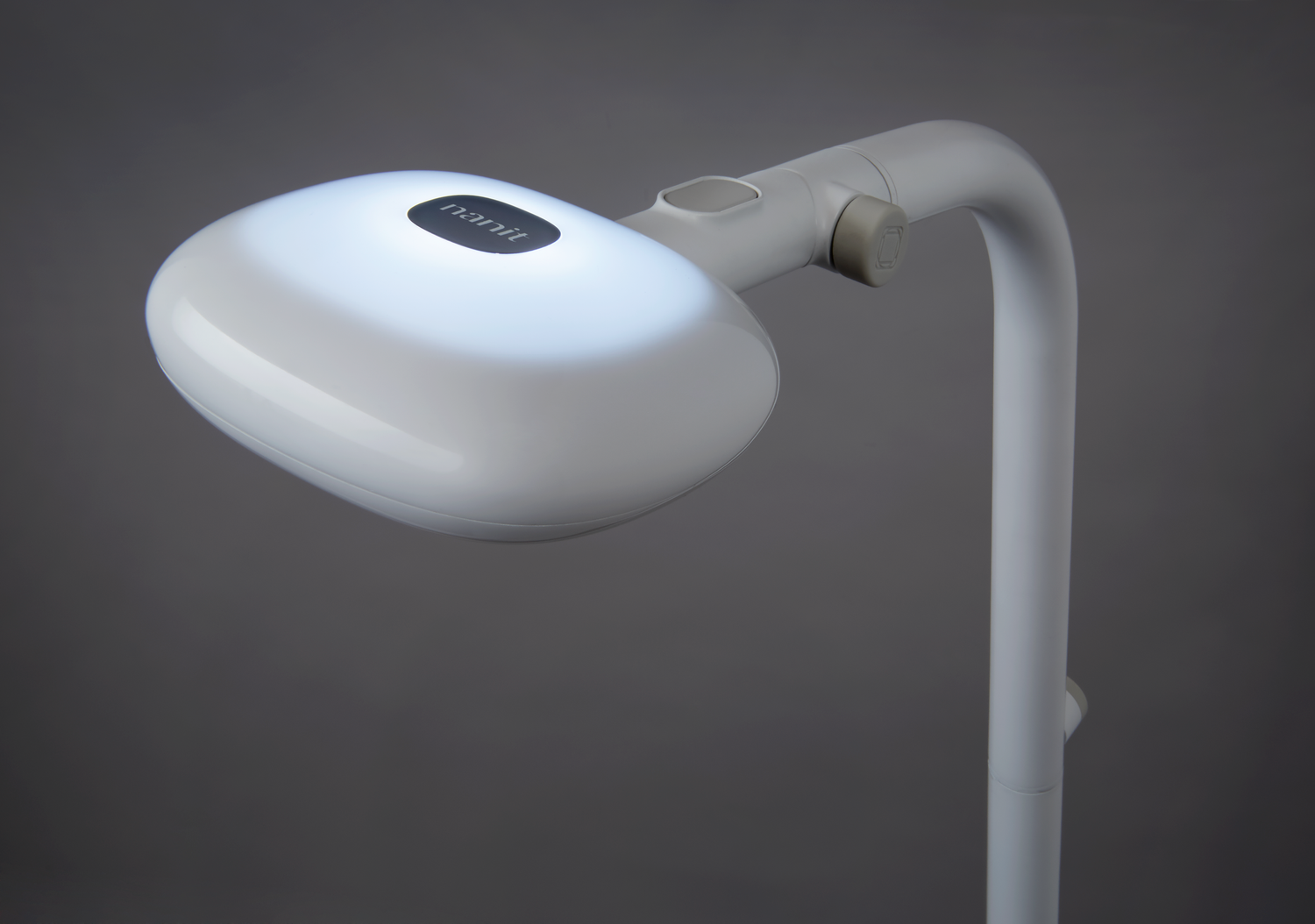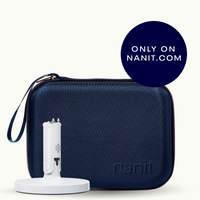Now that Nanit has arrived you might be wondering about some things. For starters, where did Nanit come from? How is it unlike other baby monitors out there? And just how does it understand sleep without being some futuristic robot from a sci-fi movie?
We sat down with two of Nanit’s co-founders, Dr. Assaf Glazer and Tor Ivry, to get the inside scoop. Here’s what they had to say.
Where did the idea for the world’s first smart baby monitor come from?
Assaf: Nanit really started out of curiosity. For 15 years, I’d been working on making cameras smarter as a researcher and engineer. Four years ago, while studying for my Ph.D. in machine learning and computer vision at the Technion Israel Institute of Technology, my wife and I had our son, Udi. As a researcher and first-time parent, I wanted to know everything about my son, including his sleep. We spent many nights trying to get him to fall asleep and I was a sleep-deprived parent like anyone else. So I thought, why not use a smart camera, like the ones I’d developed at work, to get a fuller picture of Udi? The rest is history.
Tor: Assaf and I worked together at Applied Materials from 2004 to 2010. When he told me about this exciting new venture, I couldn’t say no. We both share the vision of using technology to make life better, easier. And, at the time, I was expecting my third child. So, I really fell in love with the idea.
You’re both science and tech guys. How did research impact Nanit’s creation?
Assaf: Research is really the DNA of our company. In the beginning, I went to a pediatric sleep lab in Israel and sat with sleep experts to analyze EEG night reports and get a better understanding of how children sleep. I saw back then how sleep science could be connected to computer vision and machine learning to change things. Once we started designing Nanit, we partnered with sleep scientists, pediatricians and psychologists to create a product that’s really meaningful for parents. Our advisors include leading sleep experts like Dr. Avi Sadeh of Tel Aviv University, Dr. Deborah Estrin of Cornell Tech and Dr. Haviva Veler of Weill Cornell Medicine.
Tor: And, from a very early stage of product development, we started beta testing with parents. We used their feedback to perfect Nanit. We still consult with parents on a regular basis and do frequent user tests with Nanit’s app to ensure it makes life easier for parents.
So parents have played a pretty big role in the development of Nanit?
Assaf: Absolutely. When we were first starting out, I took parents out for coffee, sat with them for an hour and got their thoughts on baby monitors. I asked them how they used their current monitors, where they put them and why they chose certain models. I found out that most parents really want a baby monitor, but the options out there are not very smart. They can’t do more than show you an image of your child. There wasn’t much innovation or design thinking on the market. No one was thinking about cable management or an optimal view angle of the baby or what else a monitor could do besides show you an image. We decided to do things a little differently.
Tor: Nanit was designed by parents for parents. More than 80% of our team are parents – we have a total of 20 kids between us! So we get the challenges parents are facing. Nanit isn’t just a monitor. It actually helps you understand your child’s sleep. And it does it without wearable devices or sensors.
Nanit’s design is pretty beautiful. But it’s brainy too?
Assaf: We believe that once you install a baby monitor, you should forget about it. That’s why we designed the camera so it wouldn’t interfere with putting the baby in the crib. We designed the nightlight so the light’s directed at the ceiling, not the mattress, and parents can find things in the crib without waking up their child. There’s a safety concern with cable management, which is why we designed Nanit in a way where cables aren’t an issue. Even the look of the camera involved many design discussions. We decided on a pillow shape which is more gentle and less “big brother” than the typical round security cameras. We went through more than 200 design directions, just for the camera alone.
Tor: Every feature really has parents in mind, from the live stream to the temperature and humidity readings to the app that gives you a detailed story of your child’s sleep activity in an easy-to-understand format. One thing I’m most proud of is how simple and concise the information we provide parents is. In a glance you can see exactly what’s going on with your child’s sleep even if you’re sleep-deprived. It took a lot of work to reach that level of clarity!
So how exactly does Nanit understand sleep?
Tor: We use computer vision, machine learning and sleep science to understand a baby’s movement in the crib. Nanit analyzes and tracks that behavior using algorithms based solely on images delivered from the Nanit camera. That analysis is returned to parents in the form of personalized tips and sleep insights on the app. We’ve trained our algorithms to do what a wearable device simply can’t do, like tell when a child is asleep or awake, as well as when the parent approaches the crib. The algorithms learn and adapt over time, so our analytics become even stronger with each new user.
Computer vision and machine learning. That all sounds very impressive, but what does it actually mean?
Assaf: Think of machine learning as how to make computers learn and computer vision as machine learning for images. It’s like if I gave you lots of images of baby faces, then showed you a picture and asked you if it’s a baby or not. Similarly, the computer “learns” what a face looks like, then based on a new example it can tell you things. At Nanit, we capture video, which is a sequence of frames, and analyze those sequences using our algorithms to provide useful information back to parents about their baby’s sleep.
Okay, enough science talk! You guys are dads. Do your families use Nanit?
Tor: My wife and I had our third child in December 2014 and we’ve used Nanit with her from day one. Nanit has helped our family gain insight into our daughter’s sleep habits. We’ve watched her via the monitor’s live stream wake up and fall back asleep on her own. We saw her standing up for the first time in her crib through the app’s video summary. We keep witnessing magical moments that are captured when she’s in the crib and no one’s watching.
Assaf: My sons were the first two Nanit babies, and I have a third one on the way. The fact that every morning I get summaries of my kids’ sleep from the night before helps me figure out how to better parent that day. It just makes life easier. I have more time to enjoy my kids when they’re awake…and more time to sleep when they’re not!
Do you think Nanit can really be life-changing for families?
Assaf: It already has been. In our user tests, parents are able to see things like their children rolling over for the first time, putting themselves back to sleep and finding their pacifiers in the crib. They gain insight into what their kids were playing with before they fell asleep, how long it took them to sleep and what made them wake up in the morning. If you show these things to parents, it’ll make a change because parents will understand their children better. They’ll know what works, what doesn’t. They’ll feel confident when their babies fall asleep on their own and they’ll just have a more complete picture of their kids’ sleep.This is the essence of Nanit. Showing you things that happened that you otherwise wouldn’t know about, helping people by expanding the boundaries of human observation. I really see Nanit as a natural extension of the parent’s body.
Tor: Nanit is all about information and teamwork. We provide you with the information you need to make the best decisions for your child and family. You can know what’s going on with your child even when you’re not with them. Plus, we enable moms and dads to communicate with each other right from within our app. That way everyone’s on the same page when it comes to their child’s sleep.
Last question…what in the world does “Nanit” mean?
Assaf: I thought about the name a lot and had many things in mind, from nanny to nano. To me, the name evokes cutting-edge technology for parents. Plus there’s some joy, some smoothness to it. I don’t give it a specific interpretation, though. I think it’s better for parents to use their own imagination!








































